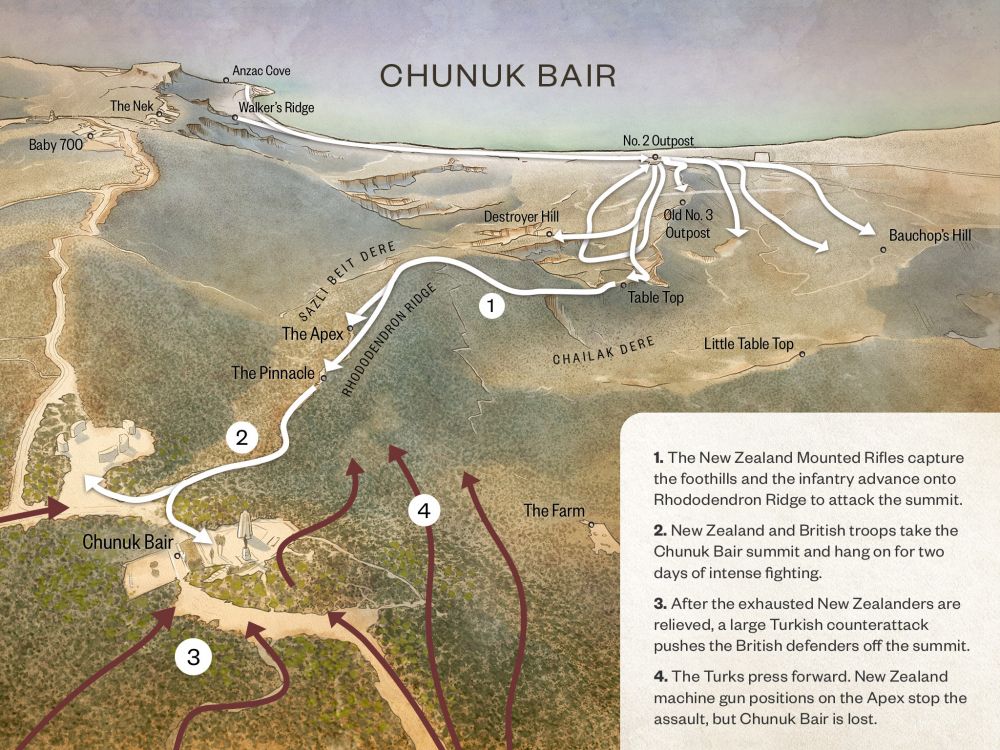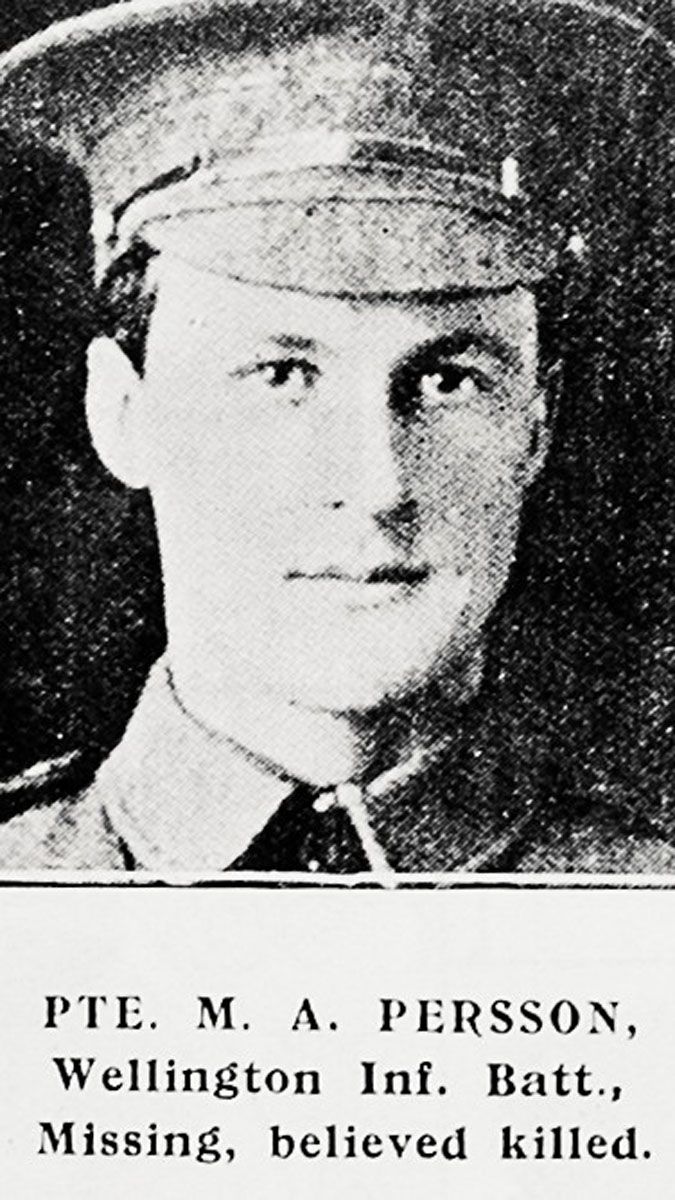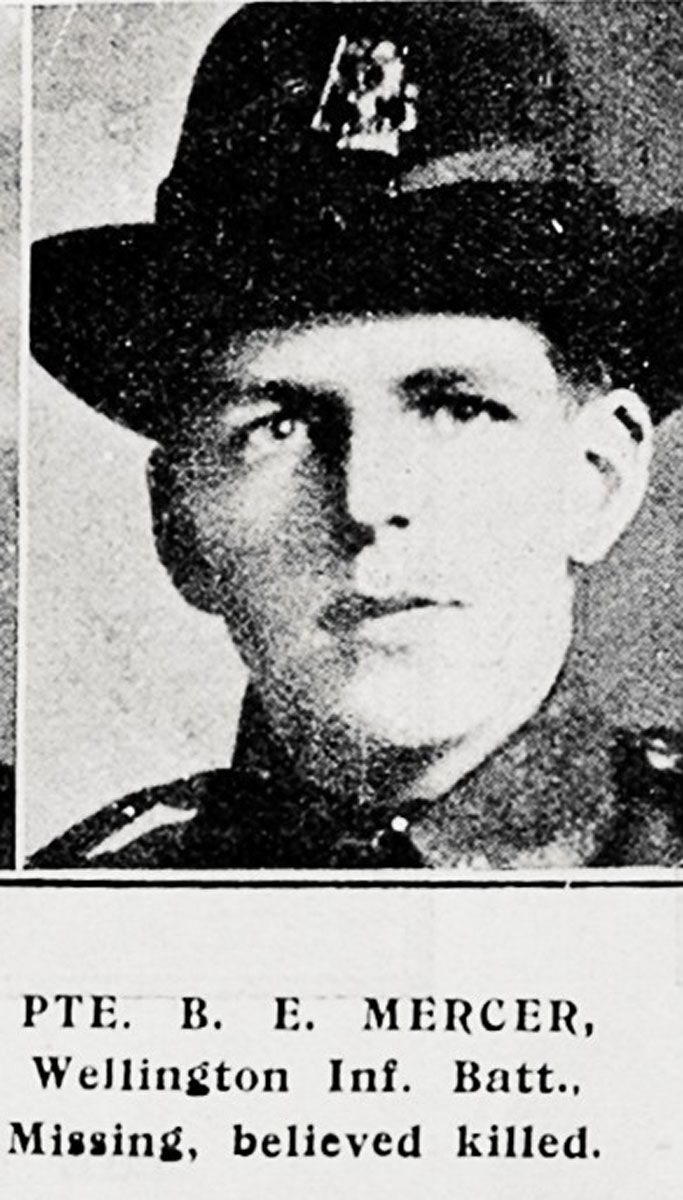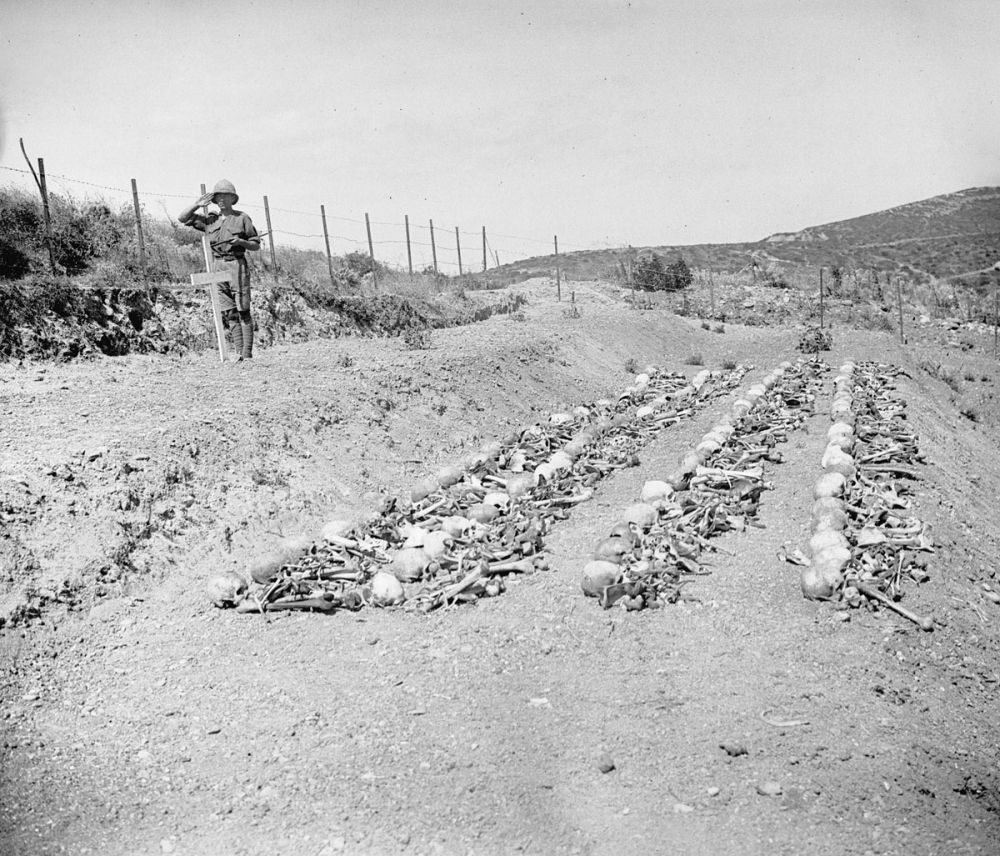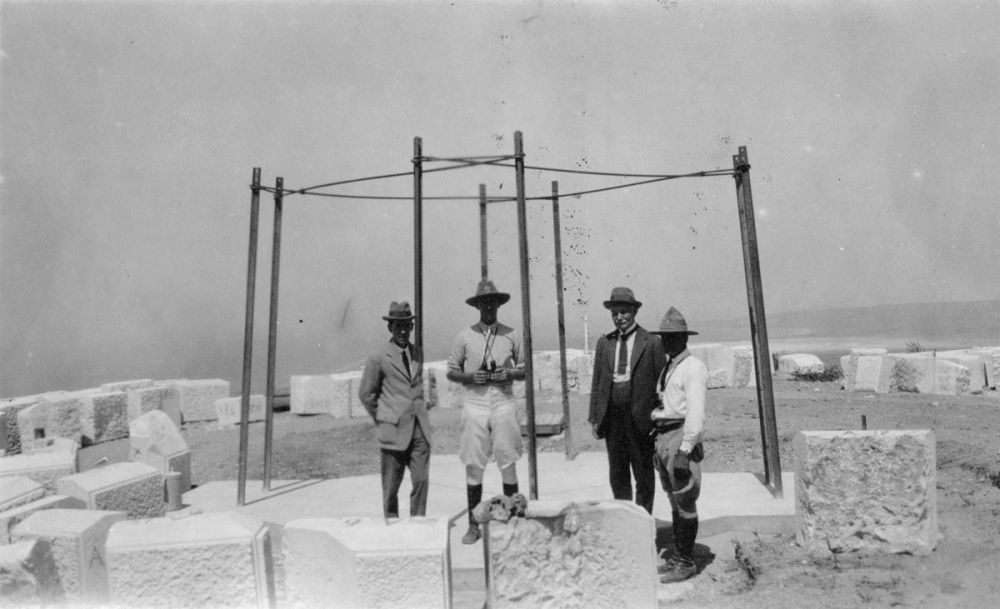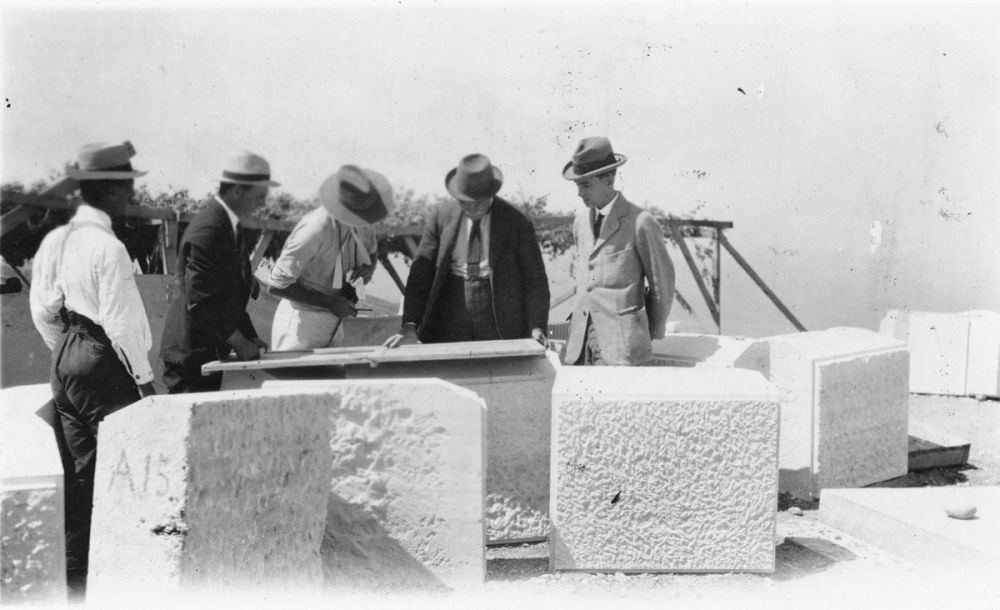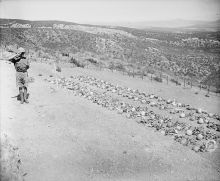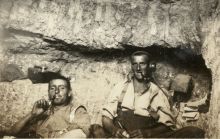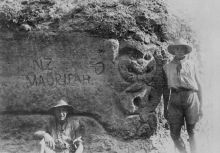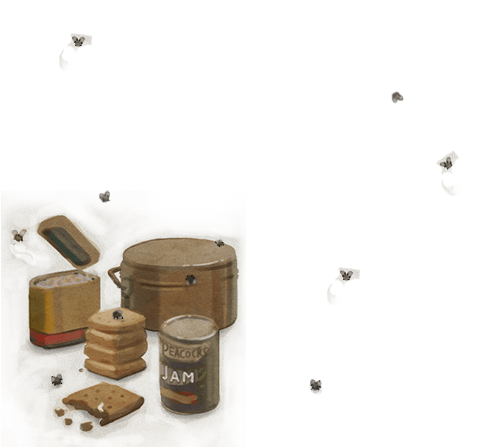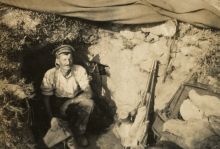New Zealand Memorial to the Missing
You’re standing at the New Zealand Memorial to the Missing on Chunuk Bair. The New Zealanders who held this high ground on the morning of the 8th of August could see the Narrows and realised that their goal was in sight. If they could just hold on here and expand their grip on this high ground then this would be an outstanding achievement.
For two days, the battle was in balance. In New Zealand terms, the cost has to be read in the 853 names of the missing New Zealanders who have no known graves. The men of the Infantry Battalions, the Mounted Rifle Regiments, the Native Contingent, the engineers and the supporting artillery, fought until they could fight no more. Now their names are recorded in stone on this memorial. The youngest of them, Basil Mercer aged just 17, is buried in the cemetery. Next to him is another 17-year-old, Matthew Persson. He lied about his age and joined up with his brother. Both fought on Chunuk Bair. Matthew died; his brother survived.
Lieutenant-Colonel William Malone of the Wellington Infantry Battalion, who was the heart and soul of the fight on the 8th of August, has his bones somewhere here, along with his men.
Less than 50 Wellington Infantry remained on this hill when they were relieved on the night of the 8th of August. The next day the Otago Infantry Battalion and the Wellington Mounted Rifles continued the fight. They were replaced by two British infantry battalions that evening. On the 10th of August, the Turks counterattacked and drove the line back down to the Apex. Once again, Captain Jesse Wallingford’s New Zealand machine gunners prevented it all falling apart.
I will always remember Gallipoli veteran Vic Nicholson of the Wellington Infantry Battalion telling me that if he was to describe Chunuk Bair on the 8th of August, it was dull red and that was blood, dried blood.
After the Allied evacuation in December 1915, the bodies were left unburied. In December 1918, after the war ended, the Canterbury Mounted Rifles and an Australian Light Horse regiment were selected to be part of the force occupying Gallipoli.
This gave the Anzac soldiers an opportunity to visit battle sites of the campaign, including Chunuk Bair. Special parties searched for graves and the bodies of their comrades. As well as collecting bones for burial, the soldiers took great care to collect buttons, badges and other items.
At this spot, there were neat piles of bones all down the slope in front of you. Everything was done with enormous reverence. There’s a photo of a British soldier, saluting the remains, before they were buried.
Nearly 70 per cent of those New Zealanders killed at Gallipoli have no known graves. After the war, the New Zealand government decided that these soldiers should be commemorated near to where they lost their lives.
The Chunuk Bair memorial was unveiled in May 1925 by General Godley, commander of the New Zealand Expeditionary Force. There are other New Zealand memorials to the missing at Hill 60, Lone Pine and Twelve Tree Copse.
The cemetery here at Chunuk Bair has 10 identified graves, including 8 New Zealanders, but under this grass, on which everyone rests before the Chunuk Bair service each Anzac day, lie the unknown dead. But whatever time of year you sit on this grass, you are certainly resting amongst friends.


